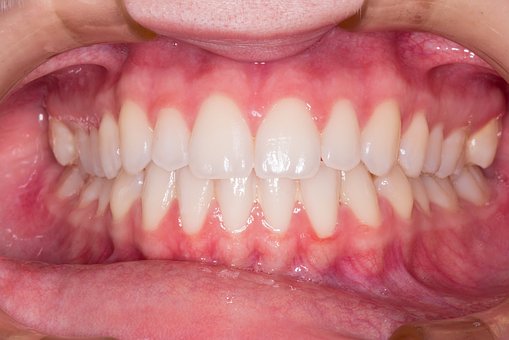Maintaining the health of the teeth is one of the keys to feeling good, but gingivitis, as well as tooth decay, remain some of the concerns that affect people all over the world the most. Left untreated, these conditions can lead to serious complications, including gum disease, cavities, and even tooth loss. The positive thing is that both gingivitis and tooth decay can be prevented and even reversed if caught early on. Knowing the warning signs allows you to take action quickly and protect your teeth and gums from lasting damage.
Table of Contents
Gingivitis: The Silent Inflamer
Gingivitis is the mildest form of gum disease and is typically caused by plaque buildup along the gumline. Plaque is a film of bacteria that forms on the teeth, as a byproduct of poor oral hygiene, eating sugary foods, and poor brushing habits. If plaque is not removed, it can harden into tartar, which can irritate and inflame the gum tissue.
Often, it’s painless, which is why many people don’t realize they have it until it progresses. Nonetheless, there are distinct indicators to observe. Redness and swelling of the gums is a frequently observed condition. Normal gums are firm and pink and fit snugly around your teeth. It becomes a cause for concern if you notice that your gums are red or swollen.
Bleeding gums are one of the biggest signs of gingivitis. Are your gums bleeding when you brush or floss? This means that your gums are inflamed and irritated. While occasional spotting may seem harmless, continuous bleeding is serious and should not be ignored. There is concern your gums are suggesting there is a problem that needs immediate care.
Chronic bad breath, or halitosis, can also be a symptom of gingivitis. The build-up of bacteria in the spaces between your teeth and gums can cause the release of foul-smelling odours. Between specific foods, a dry mouth, and other circumstances you may have ruled out, halitosis can often lead you to think gum inflammation is to blame after all.
When to Take Action for Gingivitis
Acting against gingivitis can be done best by noticing any symptoms that could be related to it. Here’s what you can do:
- Enhance Oral Care: Use fluoride toothpaste to brush your teeth at least two times each day, as well as antibacterial mouthwash, floss at least once a day, and attempt to lower the amount of plaque build-up.
- Consult The Dentist Regularly: Visiting the dentist for severe cleaning every 6 months can greatly aid in tartar removal as well as prevention of gum disease.
- Nutritious Diet: A nutritious diet that minimises sugar consumption and emphasises foods abundant in vitamins and minerals can enhance the health of your gums and teeth.
- Stop Smoking: Smoking compromises the immune system, hindering the body’s ability to combat gingivitis and various infections.
Neglecting gingivitis can result in more serious gum disease, potentially necessitating comprehensive dental interventions, including deep cleaning, scaling, or even surgical procedures. Proactive measures can prevent irreversible harm to your gums.
Tooth Decay: The Cavity Culprit
Tooth decay is the progressive deterioration of tooth enamel, resulting from bacteria that generate acids from sugars and carbohydrates. Unlike gingivitis, which primarily affects the gums, tooth decay directly impacts the tooth’s structure. Sensitivity to hot, cold, or sweet foods and drinks often signals the early stages of tooth decay.
With the erosion of enamel, the underlying dentin, which houses nerve endings, becomes exposed. This exposure results in heightened sensitivity, particularly when ingesting extreme temperatures or sugary substances.
Visible white or brown spots on your teeth may signify the onset of tooth decay. These areas show the beginning signs of enamel demineralization. In the early stages, they might appear white and chalky. As the damage progresses, they can turn brown or black. A persistent toothache or discomfort may suggest that tooth decay is present.
A sharp, fleeting pain may indicate sensitivity, whereas a dull, persistent ache could suggest the presence of a cavity. Experiencing pain while biting down or chewing may suggest that the decay has progressed to the deeper layers of your tooth.
When to Take Action for Tooth Decay
Addressing early signs of tooth decay promptly can help you avoid cavities and more complicated treatments. Here’s what you can do:
- Schedule a Dental Checkup: Dentists can spot early signs of decay through exams and X-rays, and recommend preventive measures like fluoride treatments.
- Use Fluoride Toothpaste: Fluoride helps remineralize tooth enamel and prevents further decay.
- Limit Sugary and Acidic Foods: Reducing your intake of sweets, sodas, and acidic drinks can slow down the progression of tooth decay.
- Maintain Good Oral Hygiene: Brushing and flossing daily removes plaque and helps prevent cavities from forming.
- Consider Dental Sealants: Sealants provide a protective layer against tooth decay, especially useful for children and those at higher risk for cavities.
Delaying treatment for tooth decay can lead to painful infections, the need for root canals, or even tooth extractions. Acting quickly can help save your teeth and avoid costly dental procedures.
Conclusion
If left untreated, tooth decay and gingivitis can lead to serious consequences. However, recognizing the symptoms early and acting quickly can prevent these issues from worsening. Prioritizing good oral hygiene, eating a balanced diet, and scheduling regular dental checkups are essential for maintaining healthy teeth and gums throughout your life. If you suspect you have gingivitis or tooth decay, don’t hesitate, take action now to safeguard your smile.


 Home
Home










